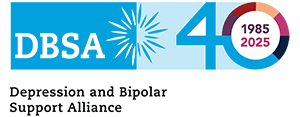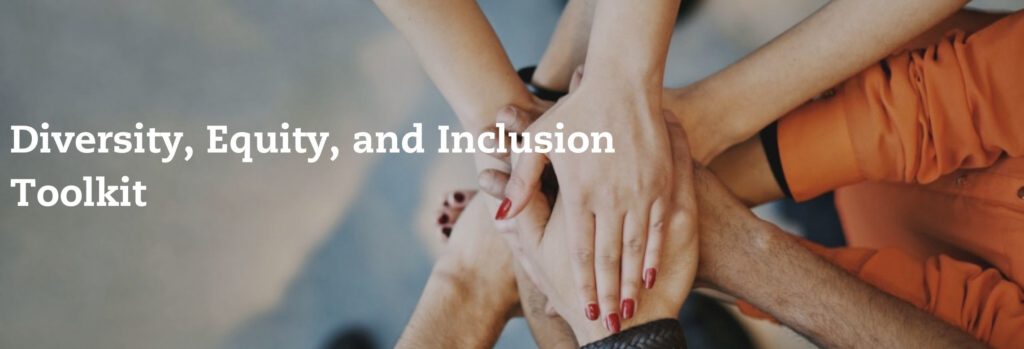The importance of racial and cultural equity
Every year in the U.S., mood disorders affect more than 21 million people across all ages, races, ethnic groups, and social classes. Yet, significant disparities in the quality of mental health care (e.g., the cost of healthcare services, the lack of available clinicians and mental healthcare facilities) for members of systematically underserved communities continue to hinder their access to vital mental healthcare services.
The issue is more urgent than ever. Recent acts of racism and violence have taken a new toll on the mental health of communities of color. According to a survey conducted by the U.S. Census Bureau, symptoms of anxiety and depression among Asians and African Americans increased disproportionately in 2020, following the death of George Floyd at the hands of police. The Covid-19 pandemic has been a particularly troubling source of stress and trauma for underserved populations. Other issues like the growth in hate crimes have contributed to the explosion in suicide rates among Black men and in children and teens.
Our work is just beginning
DBSA is committed to working to narrow the disparities that exist in mental health care. This begins by understanding the communities we serve and the issues important to them. With that understanding, we can develop a plan to reach specific underserved audiences with relevant, culturally competent content.
How to use this toolkit
This toolkit has been developed for members of support groups at local DBSA chapters who are committed to helping raise awareness of DBSA services among the underserved populations in their communities. It includes an introduction to some of the most underserved groups in the U.S., as well as steps you can take to begin the journey of reaching out to the most underserved groups within your local community.
Identifying underserved populations
Narrowing disparities and expanding mental healthcare resources to underserved populations begins by gaining a better understanding of these communities and their needs.
DBSA defines an underserved population as “a population that faces barriers in accessing and using resources related to mood disorders.” Potential barriers include geographic location, religion, sexual orientation, race, age, gender identity, and stigma. Following are some examples of groups that may represent underserved populations in your community.
Racial Identity Groups
Black community
Black Americans are 20% more likely to experience serious mental health symptoms than the general population, yet only one in three who need mental health care receive it because of barriers to wellness that include stigma, distrust of the healthcare system, high insurance costs, underrepresentation of Black healthcare providers, implicit bias, and even outright racism from medical professionals.
Asian Americans
According to the National Latino and Asian American Study (NLAAS), Asian Americans are three times less likely to seek mental health services than Whites. These communities often must contend with a negative stigma about mental health issues, a language barrier, traditional and cultural values, and pressure to succeed in academics.
Latinx community
While Latinx communities display the same vulnerabilities to mental illness as other populations, studies show that barriers to mental health care in these communities can include language barriers, poverty, lack of insurance coverage, cultural differences, and stigma about mental health within the community.
Cultural Identity Groups
Rural communities
Rates for depression and suicide in rural America are higher than in urban areas, as are rates for substance dependence and unemployment, yet members of rural communities are less likely to access mental healthcare services. Addressing these mental health issues is a significant challenge for many reasons, including a lack of mental health practitioners and access to broadband internet in rural areas–as well as issues that can be directly correlated to the solitary, isolated lifestyle of many rural residents.
LBGTQI community
Research has shown that Lesbian, Bisexual, Gay, Transgender, Queer, and Intersex (LBGTQI) adults more than twice as likely and transgender adults nearly four times as likely as heterosexual adults to experience a mental health condition, due in part to an inability to find clinicians and other mental health resources.
Youth, Teens, Young Adults
National surveys have shown significant increases in reported persistent feelings of sadness or hopelessness, with suicide rates among youth (ages 10-24) having increased by 57% between 2007 and 2018.
Professional Groups
Veterans
Veterans experience rates of suicide much higher than the national average. After adjusting for differences in age and sex, risk for suicide was 22 percent higher among Veterans when compared to U.S. non-Veteran adults.
Police Officers
Police officers report higher rates of depression, anxiety, and post-traumatic stress syndrome. More officers die by suicide than in the line of duty. Because of stigma, most police officers do not seek care for mental health issues. Despite a lack of treatment, mental health illnesses are more prevalent among those with law enforcement jobs.
Steps to take
Step 1. Identify underserved needs in your community
Armed with information about the wide range of potentially underserved populations in the U.S., you can begin the work of identifying underserved groups in your community. The first and most important step is to conduct a needs assessment.
A needs assessment is an analysis designed to help us close the gap between where we are today and where we want to be. It is a process that will help you pinpoint the health needs, risk factors, and barriers to care for groups with unmet mental health needs.
Your community mental health needs assessment should include three main steps:
- Identify project needs and potential barriers. At the outset, it is important to identify the factors within the organization and in the community that may limit the scope of the project. This will help you set expectations about what you will and will not be able to accomplish.
- Collect and analyze data about the mental health needs of your community. You can collect data about your community’s needs in a variety of ways, including the use of surveys, questionnaires, focus groups, or public meetings. Secondary information sources—including demographic data, hospital records, literature reviews—can also provide valuable insights. Analysis of the data will produce a big picture of the populations of major concern and the needs that need to be addressed.
- Develop a report with an action plan. After all the data has been collected, a summary report of the findings should be developed that provides actionable data about the audiences in your community with the greatest needs and recommends next steps.
Armed with actionable information and insights, you will be better able to secure funding for your efforts and increase awareness of DBSA services.
Step 2. Find a Community Partner
Now, you will need to find a partner or partners to help you reach each group, especially if you have limited knowledge about them. These gatekeepers and stakeholders can help you gain a better understanding about the needs and cultural values of the group.
Before approaching a specific community, you should learn as much as possible about its people, history, socioeconomic makeup, and culture. Resources like the U.S. Bureau of the Census or the local planning or health department can provide information about the demographics of the community.
Other community-based organizations (CBOs) and groups that serve as the voices for specific communities will also be valuable resources for getting to know the communities and how they operate. Ask these key individuals to tell you about the individuals that have influence in the community you are researching. You should be able to find their contact information through local agency listings.
Step 3. Build Relationships with Community Partners
After you have identified CBOs that represent the underserved communities you are targeting, the next step is to begin building mutually beneficial partnerships with them. This process starts with learning more about the organization—its priorities and services, as well as its members, staff, and volunteers. You can accomplish this by studying the organization’s website, looking for commonalities in priorities and core competencies between the CBO and your local chapter.
- Identify the best contact person, which should be an influential decision-maker within the organization. Review the organization’s board of directors, members of the organization’s management team, executive assistant, or volunteers to identify good candidates to serve as your first contact with the organization. If someone in your network has an existing relationship with the contact person you identify, ask if they would provide an introduction.
- When you’re ready to reach out, send a letter or email requesting an in-person or phone meeting. (You can use the letter of introduction template provided here as a guide for organizing your message.) Be sure to include information about your organization and your role and responsibilities, as well as a preview of the objectives of your proposed partnership. Add any information you gleaned from your research about the organization—such as a new program, grant award or a successful event.
- To ensure a successful initial meeting with your contact at the potential partner’s organization, create an agenda that includes all the topics you want to cover at your first meeting. If it is clear to you that their priorities align with yours, present your ideas about how a partnership with DBSA would be mutually beneficial. (Be sure to articulate the ways that DBSA is different from other mental health organizations.)
Step 4. Create a partnership agreement
After you and your potential partner organization have agreed that you share common ground and offer mutually beneficial resources, you will need to draft a formal agreement that states the nature of the proposed partnership
The partnership agreement should include details that help guide the partnership and serve as a tool for assessing progress in meeting your mutual objectives over time. When framing the document, be sure to include:
- Descriptions of the mission of each partner organization
- Authorized contacts at each organization
- Roles, responsibilities, and expectations for each partner, including any financial obligations, if appropriate
A clear definition of the goals of the partnership (i.e., what you are both seeking to accomplish) - Timelines for accomplishing the partnership’s objectives
At this point, you may also want to include descriptions of specific assignments and their owners—and how you will report, track, and evaluate impact data for each.
Be sure to keep your partnership letter of agreement clear and concise. And take special care when it is time to sign it, because it is a legally binding document. In some cases, you may need a notary’s signature on the agreement.
To access a template that you can use in developing your partnership agreement, click here.
Step 5. Track the progress of your partnership
To ensure that both organizations are continuing to benefit from your work together,
regularly assess your partnership on an ongoing basis, beginning as early as your first meeting.
Designate a member of your team to own the responsibility for tracking progress of the partnership. You can gauge the engagement and enthusiasm of each organization at regular meetings, where you can review timelines and deliverables. These are also good opportunities to discuss challenges that may be impeding or interfering with the ability to meet the planned deadlines.
For each project or assignment, provide your partner with a formal written report that summarizes the goals and deliverables that were accomplished.
Step 6. Conduct outreach and create a marketing plan
There are a wide range of resources and media that can be useful when it is time to begin outreach efforts that will help you advance the mission of your partnership and grow awareness in the targeted communities
Social media is a critical tool for communicating, sharing information, and building networks in your local communities. To use social media most effectively, you’ll want to access readily available research about consumption patterns among the communities you are targeting and learn about which social platforms are the most popular with each group. For example, more Black and Hispanic individuals use Facebook than White users, while Instagram serves a larger share of African American users than White or Hispanic users.
Using culturally preferred forms of communication is the best way to convey your message and to reduce the stigma and misinformation about mental health issues to the communities you want to reach. For example, getting the cooperation of faith leaders, barbers and salons, ethnic grocers—even popular media figures– in the Black community can be a very effective tactic in reaching that population. Trusted messengers for other groups include the Interfaith Mental Health Coalition. Islamic communities also have mental health resources that include the Institute for Muslim Mental Health.
References
[1] https://www.washingtonpost.com/health/2020/06/12/mental-health-george-floyd-census/?arc404=true
[2] https://www.apa.org/pi/oema/resources/ethnicity-health/asian-american/article-mental-health
[3] https://www.nami.org/Your-Journey/Identity-and-Cultural-Dimensions/Hispanic-Latinx
[4] https://www.clinicaladvisor.com/home/topics/practice-management-information-center/health-disparities-in-rural-america-current-challenges-and-future-solutions/3/
[5] https://www.nami.org/Your-Journey/Identity-and-Cultural-Dimensions/LGBTQI
[6] https://www.hhs.gov/sites/default/files/surgeon-general-youth-mental-health-advisory.pdf



